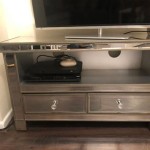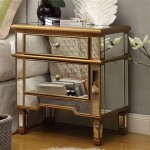Does A Two-Way Mirror Have a Gap?
The concept of a two-way mirror, also known as a one-way mirror or a semi-transparent mirror, is commonly portrayed in media and plays a significant role in various law enforcement, retail, and research settings. The allure surrounding these mirrors stems from their ability to allow observation from one side while appearing as a standard mirror on the other. However, understanding the physics and construction of two-way mirrors is crucial for discerning their true nature and debunking common misconceptions.
One recurring question arises concerning the presence of a gap or a visible seam around the edges of a two-way mirror. Whether a gap is present, and the significance of any such gap, requires examination of the installation process and the underlying principles governing how these mirrors function. It is important to differentiate whether a perceived 'gap' is a functional requirement or merely a consequence of inadequate installation.
Understanding the Functionality of a Two-Way Mirror
A two-way mirror isn’t inherently different in its composition from a regular mirror. The primary difference lies in the thinness of the reflective coating applied to the glass. Standard mirrors have a thick, opaque metallic coating, usually silver or aluminum, which reflects nearly all light that strikes it. A two-way mirror, on the other hand, has a very thin, translucent coating. This coating allows approximately half of the light to pass through the glass and the other half to be reflected.
The illusion of a one-way mirror relies on the presence of significantly different lighting conditions on either side. On the "mirror" side, the room is brightly lit, so the light reflected off the coating overpowers the light transmitted from the darker, observation side. The observer on the bright side sees their reflection as in a standard mirror because their own image is more prominent. Conversely, on the observation side, which is kept dark, very little light is reflected back. The light coming through from the brighter side is more noticeable, allowing individuals on the darkened side to see through the glass.
The level of effectiveness is determined by the ratio of light levels between the two sides. A considerable difference in illumination is indispensable for the successful operation of a two-way mirror. Without this difference, the illusion fails, and observers on both sides may be able to see through the glass to some degree.
The Role of Installation: Gaps or No Gaps
The assertion that a two-way mirror necessitates a gap around its edges is largely untrue. The performance of the mirror itself is not dependent on the physical presence of a gap. Instead, the presence of any gap, whether minute or substantial, is primarily a consequence of installation practices. Poor installation can invariably lead to gaps, but a professionally installed two-way mirror should sit flush within its frame, similar to a standard mirror or pane of glass. The presence of a noticeable gap might raise suspicion or compromise the aesthetic integrity of the setting, thereby diminishing the mirror's covert functionality.
Proper installation involves securely fitting the mirror within a frame or wall opening with minimal space around the edges. This is done not due to any functional need for a gap, but to ensure the mirror is stable and safe. The use of appropriate shims, sealants, and framing materials is critical in achieving a seamless and secure fit. When installed correctly, the edges of the two-way mirror should be nearly flush with the surrounding surface, minimizing any visible gap. Any sealant used, such as caulk, should be applied neatly and evenly to prevent light from leaking through and disrupting the illusion.
Therefore, the existence of a gap typically indicates either a poorly executed installation or, in some instances, the intentional creation of space for alternative purposes, such as ventilation or to accommodate wiring. However, such intentional gaps are not inherent to the functionality of the two-way mirror. An improperly installed mirror can offer subtle clues to its presence. For example, if you press against it and it moves slightly, that could indicate it isn't mounted securely.
Factors Affecting Perceived Gaps
Several factors can contribute to the perception of a gap around a two-way mirror, even when one isn't physically present or is minimal. These include:
Optical Illusions: The difference in refractive index between the glass and the surrounding materials can create optical distortions that appear as gaps. This is especially true if the edge of the mirror is not perfectly aligned with the surrounding wall or frame. Variations in light refraction can cause the edge to appear slightly raised or offset, creating the illusion of a space.
Shadows and Reflections: The interplay of light and shadow can also contribute to the impression of a gap. If the lighting is uneven, shadows cast along the edge of the mirror can accentuate any minor imperfections in the installation, making them appear more pronounced. Reflections of surrounding objects or surfaces near the edge can also create visual noise that suggests the presence of a gap where none exists.
Construction Tolerances: Manufacturing and construction tolerances play a role. Even with precise measurements, minor variations in the size and shape of the mirror and the surrounding frame can lead to slight discrepancies. These small differences, while not constituting true gaps, can be noticeable upon close inspection, especially if the materials have differing expansion and contraction rates due to temperature variations.
Psychological Bias: Finally, psychological factors can influence the perception of gaps. If someone is already suspicious that a mirror might be two-way, they are more likely to scrutinize the edges for any signs of irregularity. This heightened awareness can lead to overinterpretation of minor visual cues, resulting in the perceived presence of a gap even when there is none.
In summary, the notion that a two-way mirror must have a gap is a misconception stemming from installation imperfections and perceptual biases. A professionally installed two-way mirror should sit nearly flush with its surroundings, minimizing any visible space. The absence or presence of a gap is not a determining factor in the functionality or authenticity of a two-way mirror. Key factors are the lighting differential between the two sides, the thinness of the reflective coating, and the overall design and purpose of the surveillance or observational setup.

2 Way Mirror Test The Joy Fm Contemporary Radio Positive And Encouraging

On Some Mirrors If You Touch It Why Is There A Gap In Between And The Reflection Isn T Quora
How To Tell If A Mirror Is Two Way Or Not Quora

How To Spot A Two Way Mirror Snopes Com
How You Do A Quick Check For Cams Or Two Way Mirrors In Trial Rooms Quora

How A Two Way Mirror Works

How To Tell If A Mirror Is Two Way Or Not 8 Steps With Pictures

How To Detect A Two Way Mirror Wisdom Hints Tips Facts Life S Helpful Interesting About World Useful

Marty S Fiber Musings No Space Leave The Place

Tips For Identifying Whether Your Mirror Is Two Way Or Not Ledmyplace








